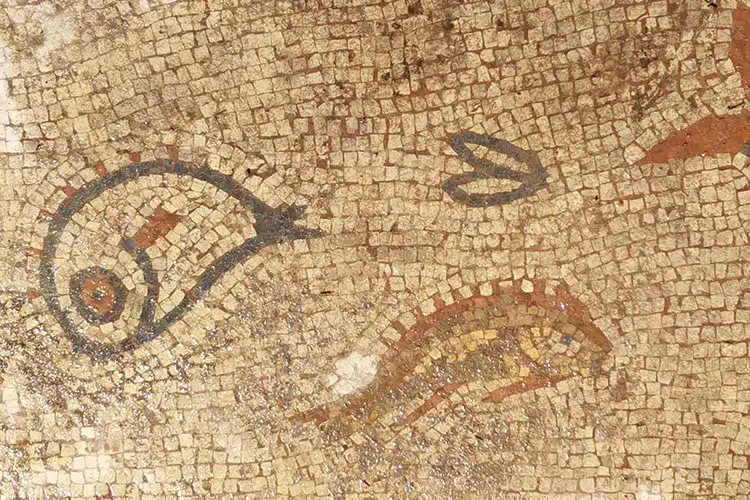
The Wroxeter Roman city mosaic. (Photo: English Heritage)
Roman Britain has left behind many relics which are still turning up in the soil of the island. From statue heads to Roman roads, archeologists are still making discoveries about the once-thriving outposts of the Empire. One important remnant of Roman Britain is the city of Wroxeter, known at the time as Viriconium. Archeologists were recently investigating the location of an ancient civic temple and, on the way, discovered a very special mosaic depicting adorable sea life swimming across the ancient floor.
Wroxeter Roman city was founded around 90 CE and grew into a metropolis with over 200 houses, a bathhouse, a marketplace, and civic buildings such as a hall and temple. It was the fourth largest city in Roman Britain and is home to the country’s largest remaining freestanding Roman wall. The ruins of the bathhouse can still be seen above ground. The rest of the city lies buried—much of it still waiting to be documented.
The archeologists, including trainee students, dug trenches to search for the Civic Temple that once existed. They discovered a large building on the city’s main road and what appears to be a mausoleum honoring a dearly departed and prominent citizen.
An impressive mosaic buried under soil for 2,000 years was also discovered. The mosaic was likely created in the second century CE. Created from red, white, yellow, and blue tesserae, it features a rare sea life motif: fish and dolphins frolic across the floor.
This marine life motif is perhaps especially surprising given Wroxeter Roman city is landlocked near the border of England and Wales. Next to the mosaic floor, the team also discovered the knee-high remains of a plaster wall with surviving paint. While these exciting finds are not visible to the public, due to being reburied for protection and preservation, ancient Roman aficionados can visit other ancient ruins at the site.
A mosaic discovered in England depicts sea life swimming across the stone-tiled floors of what was once Roman Britain’s fourth-largest city.

A fish swims through the mosaic. (Photo: English Heritage)
h/t: [Good News Network, English Heritage]
Related Articles:
Turkey’s Ancient Göbekli Tepe May Be Home to the World’s Oldest Solar Calendar
Trove of Persian Gold Coins Discovered in Ancient Greek City
Roman Road Is Found Buried Under an English Village Schoolyard
British Man With a Metal Detector Stumbles Upon 52,000 Ancient Coins Worth $500K
